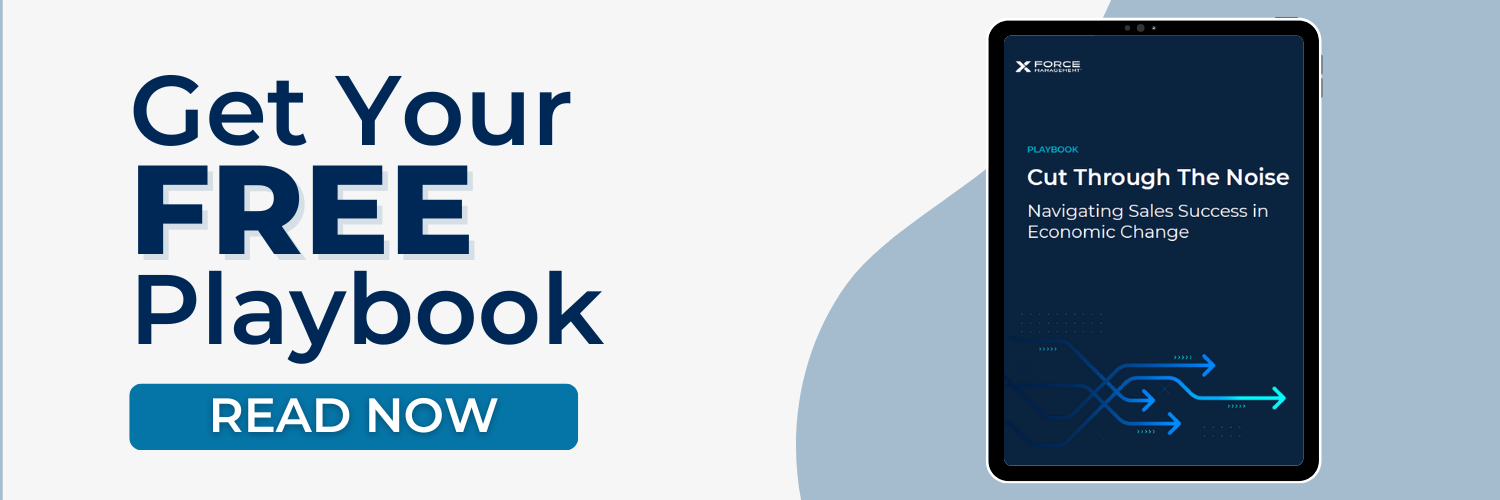
Convert More High-Value Leads with Sales and Marketing Alignment
Categories: Sales Messaging | Company Alignment | Sales and Marketing
Recent economic uncertainty has forced many sales teams to dig deeper into their territories for potential pipeline and put a critical focus on effectively maximizing every lead. As buyers become more budget-conscious and develop more stringent criteria, it’s never been more important to communicate value from the very first interaction.
A clear understanding of how buyer needs have shifted and what positive outcomes motivate them is crucial to attracting qualified leads right now. It’s critical that leaders enable a great hand-off from marketing to sales in order to make the most of high-value leads. Alignment between these teams on a powerful value message that resonates with buyers is the key to competing and driving predictable revenue in this environment.
As a sales leader, there are actions you can take to help your commercial teams have a greater impact with buyers in the current economic environment. It starts with ensuring alignment on a message that speaks to their greatest pains and goals right now:
The Importance of Value Messaging
Value messaging is where the marketing and sales messages connect. A great message of value communicates not what you deliver to the customer, but what outcomes you produce for the customer. In order to preserve margin through the sales process, you need a framework that leverages strategic marketing and product messages into impactful sales conversations that uncover and influence customer requirements. Customers are ultra-focused on ROI in a tight economy, which means your reps need to communicate value from the very first conversation.
It's critical that your value messages are highly "sales-consumable," meaning they're phrased in a way that allows salespeople to easily connect them to customer needs as they arise. This allows your team to be responsive rather than prescriptive, a competitive strength in today’s ever-changing sales economy. When fully implemented, a value messaging framework enables your entire organization to be nimble and pivot actively as customer needs change. That's the power of a messaging-focused sales transformation initiative.
You invest a lot in marketing talent and dollars to bring in great leads. It’s crucial that your sellers are able to capture that effort and carry it through the sales process with a common language and consistent value message. Otherwise, your buyers will experience a disconnect, and all the effort it took to get that lead "in the door" ends up being a missed opportunity.
Generating Cross-Functional Messaging Alignment
Your sales and marketing teams have likely already shifted their messaging in response to ongoing economic uncertainty in the market. It’s crucial to ensure alignment around how your solution is equipped to solve evolving buyer challenges as well as your differentiation. With buyers facing budget concerns, it’s possible that “do nothing” or “do it internally” are emerging as bigger competitors. A unified value message that starts with marketing and helps sellers get higher in the customer organization will create urgency and justification for your solution without discounting.
So what does it mean to have cross-functional alignment? When you’re aligned, everyone in your organization has a common language around the value you provide and what a great deal is for your company. One way to start is to generate consistent answers to the essential questions. Elite sales organizations have clear, common answers to the following:
- What problems do you solve for customers?
- How do you solve those problems?
- How do you solve them differently and/or better than the competition?
- Where have you done it before?
In our Command of the Message® workshops, we often ask our clients’ executive team members how they individually would answer these questions. Consistently, senior leadership has different ways of answering them. If your executive team can’t answer the questions consistently, imagine how many different versions exist at the seller level.
The essential questions help companies lay the groundwork for developing a buyer message that’s aligned around the value and differentiation of their solutions. Agreement on the answers to the essential questions enables sales reps, marketers, BDRs, customer success, etc. to focus on the customer’s greatest needs in their individual roles.
Given the current economic state, your executive team may find value in reviewing the essential questions as they work to develop a consistent, value-driven sales message that speaks to what’s happening right now. As you consider those questions, also consider:
- How have your buyers’ needs changed?
- Can you solve these new problems?
- What are your differentiators that align to your buyer’s new challenges?
- How are your salespeople equipped to articulate your value and differentiation as it relates to these new challenges?
Equip Your Organization to Execute
Companies that drive and scale predictable revenue during economic uncertainty start by aligning their marketing and sales efforts around their value message. Here are two ways you can leverage cross-functional alignment throughout the entire sales process:
1. Keep the conversation focused on critical buyer needs:
Leverage your company’s answers to the essential questions to develop messaging frameworks that enable each customer-facing team (marketing, SDR/BDRs, enterprise reps, etc.) to keep the focus on the buyer’s business problems and how your solution can uniquely solve their challenges. If your sales and marketing messaging is aligned around your organization's answers to the essential questions, you’ll be able to ensure a smooth transition from one handoff to the next. When it comes time to qualify and progress high-value marketing qualified leads (MQLs), your enterprise reps will be able to continue that value-driven conversation in a way that clearly differentiates your solutions from competitors (and “do nothing” or “do it internally” decisions). This continuity ensures no momentum is lost in the sales process at a time when every resource hour is vital.
Something to consider: A messaging-focused sales transformation will enable your entire company to leverage value in every critical customer engagement. If you’re curious about how exactly a sales messaging initiative may impact your marketing or SDR/BDR teams, this article may provide you with new insights to consider.
2. Collaborate on sales & marketing consumable content:
Equip your sales and marketing teams to execute in their prospective roles by developing sales-consumable tools that are centered around your buyer’s specific challenges and the PBOs they’re hoping to achieve.
Your sales-consumable tools should support the seller's ability to be audible-ready to respond to buyer concerns and hold a value-based conversation in their live opportunities. At the same time, the tools should also support marketing teams in tying their campaigns to relevant customer needs and pain points, so they can capture interest from high-value MQLs. Proof points and case studies are great examples of content that is highly valuable to both sales and marketing.
Prioritize sales teams owning their proof points and working with marketing to develop a powerful story of how you’ve delivered ROI to existing customers. This ensures they’ll be better equipped to leverage their proof points in future conversations with prospects in a way that enables future business.
We’re all familiar with the list of logos many companies put out there to show credibility. Ask yourself this: can your sales reps clearly articulate the challenge and positive business outcomes that were achieved in that opportunity? Ensure there’s a refined process for proof point creation that will equip your sales and marketing teams to tell a story that’s impactful to prospects in various stages of the sales funnel/cycle. Here are a few tips your marketing and sales teams can use to nail your proof points.
Develop a Unified Strategy to Rise Above Economic Challenges
As uncertainty in the market continues to impact buyer behavior, it’s critical to equip your team with the messaging and tools needed to cut through the noise. New challenges can present an opportunity to provide new value to your customers, but you must have a unified strategy to communicate ROI throughout the marketing and sales cycle.
Get started with this playbook for sales leaders. It contains specific action items and questions to ask to ensure alignment and get top-down buy-in from your entire organization. The strategies included come from real-life organizations who have succeeded in generating and scaling predictable revenue in challenging economic environments.


